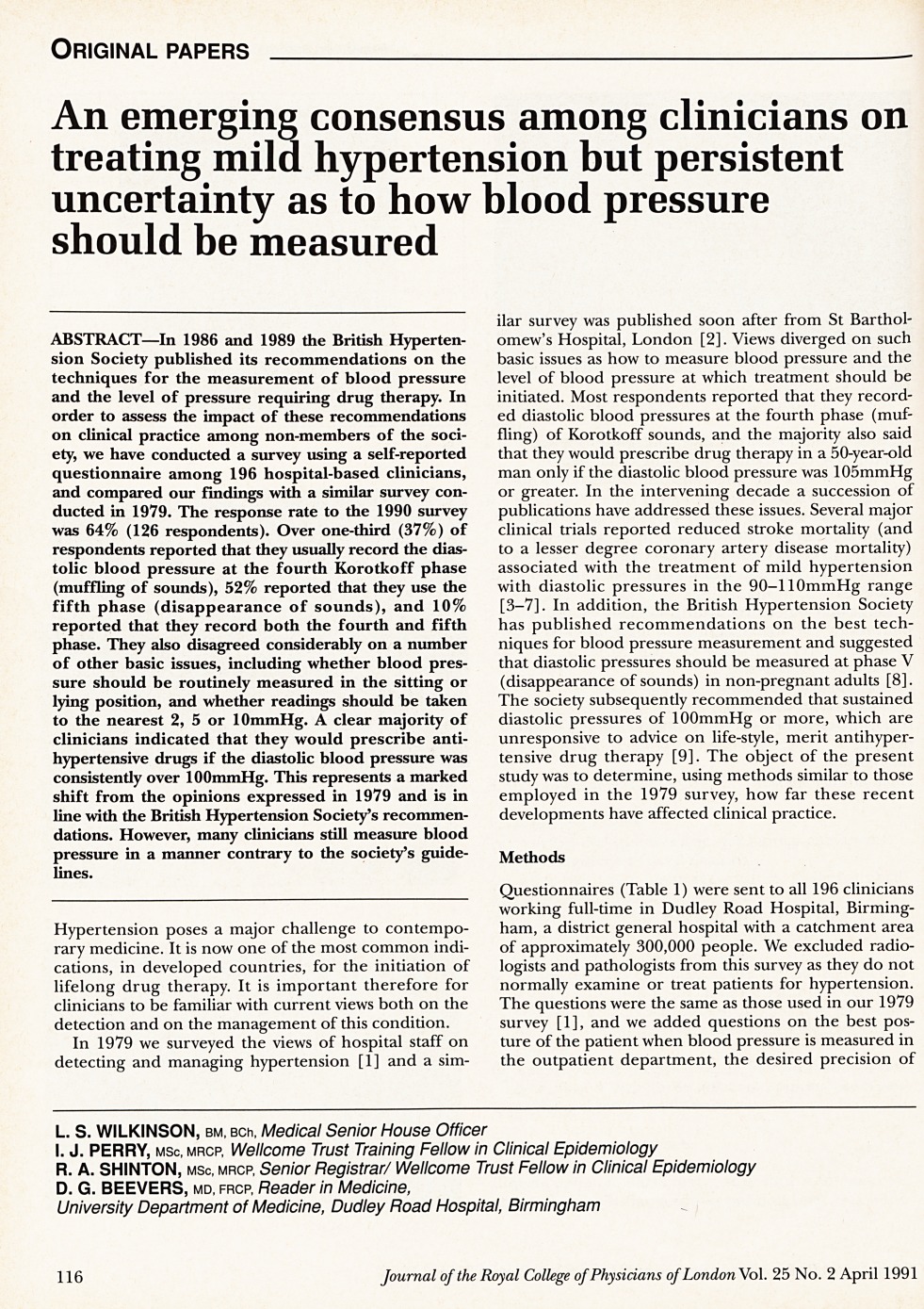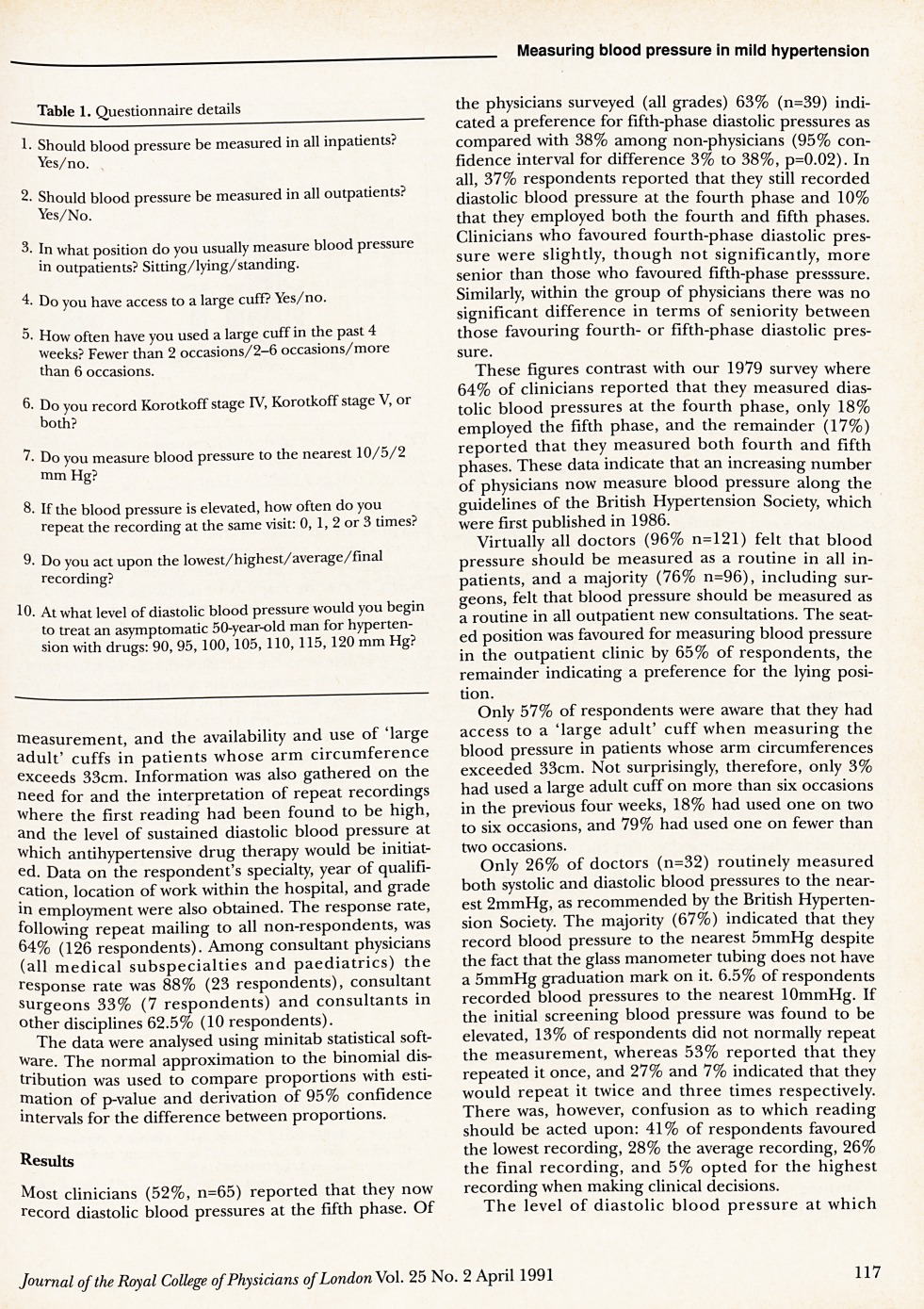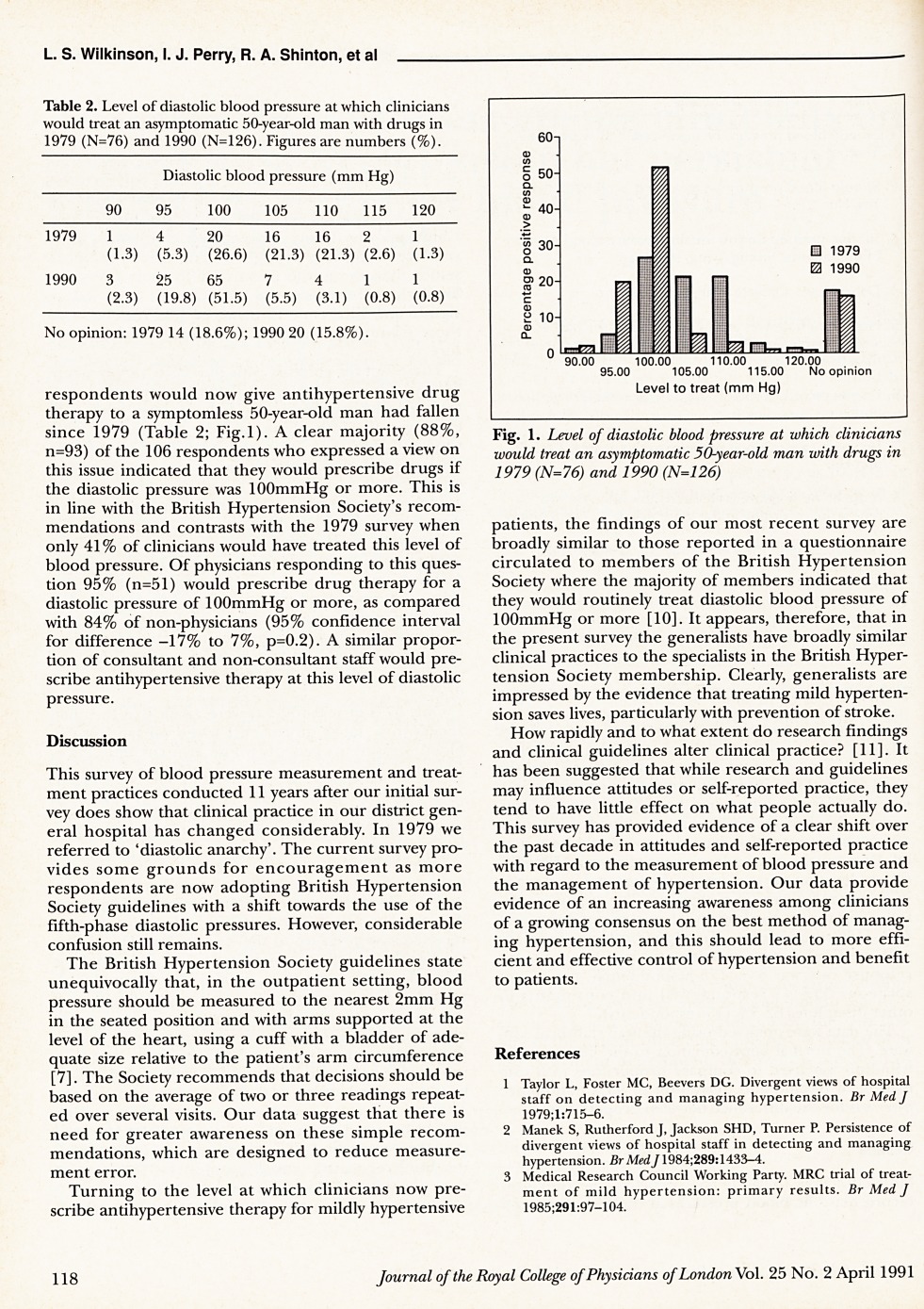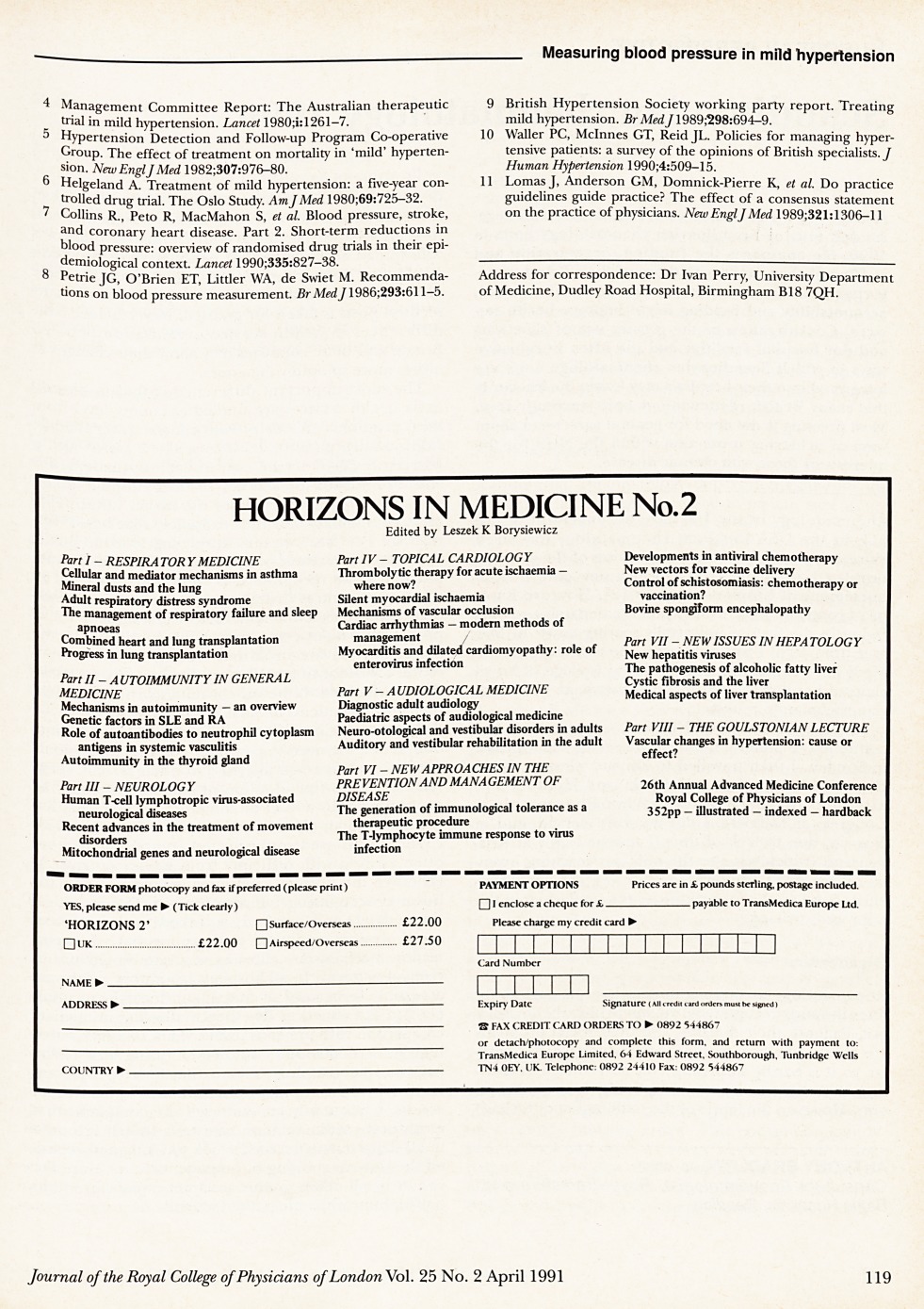Abstract
In 1986 and 1989 the British Hypertension Society published its recommendations on the techniques for the measurement of blood pressure and the level of pressure requiring drug therapy. In order to assess the impact of these recommendations on clinical practice among non-members of the society, we have conducted a survey using a self-reported questionnaire among 196 hospital-based clinicians, and compared our findings with a similar survey conducted in 1979. The response rate to the 1990 survey was 64% (126 respondents). Over one-third (37%) of respondents reported that they usually record the diastolic blood pressure at the fourth Korotkoff phase (muffling of sounds), 52% reported that they use the fifth phase (disappearance of sounds), and 10% reported that they record both the fourth and fifth phase. They also disagreed considerably on a number of other basic issues, including whether blood pressure should be routinely measured in the sitting or lying position, and whether readings should be taken to the nearest 2, 5 or 10mmHg. A clear majority of clinicians indicated that they would prescribe antihypertensive drugs if the diastolic blood pressure was consistently over 100mmHg. This represents a marked shift from the opinions expressed in 1979 and is in line with the British Hypertension Society's recommendations. However, many clinicians still measure blood pressure in a manner contrary to the society's guidelines.
Full text
PDF



Contributor Information
L. S. Wilkinson, Medical Senior House Officer, University Department of Medicine, Dudley Road Hospital, Birmingham
I. J. Perry, Wellcome Trust Training Fellow in Clinical Epidemiology, University Department of Medicine, Dudley Road Hospital, Birmingham
R. A. Shinton, Senior Registrar/ Wellcome Trust Fellow in Clinical Epidemiology, University Department of Medicine, Dudley Road Hospital, Birmingham
D. G. Beevers, Reader in Medicine, University Department of Medicine, Dudley Road Hospital, Birmingham



